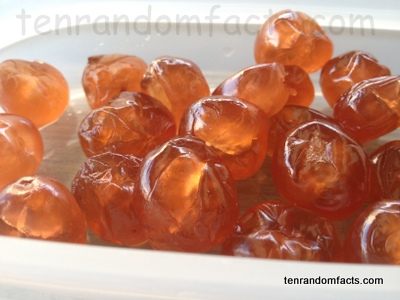Candied fruit prevents fruit from spoiling – and tastes good too!
- Candied fruits are food items, in particular fruit, that have been preserved by a sweetener, usually sugar.
- ‘Candied fruit’ is also known as ‘crystallised fruit’, ‘frosted fruit’, ‘glacé fruit’ and ‘glazed fruit’, although the candying processes may vary among the terms.
- Candied fruit is typically candied by letting fresh or rehydrated fruit boil, and then sit in sugar syrup, and the sugar content of the syrup is gradually increased each day.
- Candied fruit can take from a few days to many months to become completely candied, and dried fruit will achieve this outcome faster.
- The candied fruit method causes the water to be extracted from the fruit and replaced with sugar, and this creates a type of pressure that repels some microorganisms that helps to preserve the fruit.
- Cherries are the most commonly candied fruit, and other fruits include oranges and their peel, mandarins, figs, melons, and pineapples, and lemon peels, chestnuts and ginger are also often candied.
- Candied fruit is typically sold and stored in airtight containers, so moisture cannot spoil the fruit, and it is popularly used in desserts and baked goods, most notably in fruitcake.
- Candied fruit is said to have originated from the Middle Eastern Arabs, as an important banquet food, which spread into Europe most likely in the 1500s.
- Of all candied fruits, limes are one of the most difficult to successfully candy due to the chemicals in the rind, and usually the process is only achieved in commercial settings.
- Candied fruit is approximately 80% sugar, and usually contains small amounts of fibre and manganese.
Bibliography:
Candied Fruit, 2011, Cooks Info, http://www.cooksinfo.com/candied-fruit
Candied Fruit, 2013, Wikipedia, http://en.wikipedia.org/wiki/Candied_fruit
What is Candied Fruit?, 2014, WiseGEEK, http://www.wisegeek.com/what-is-candied-fruit.htm






